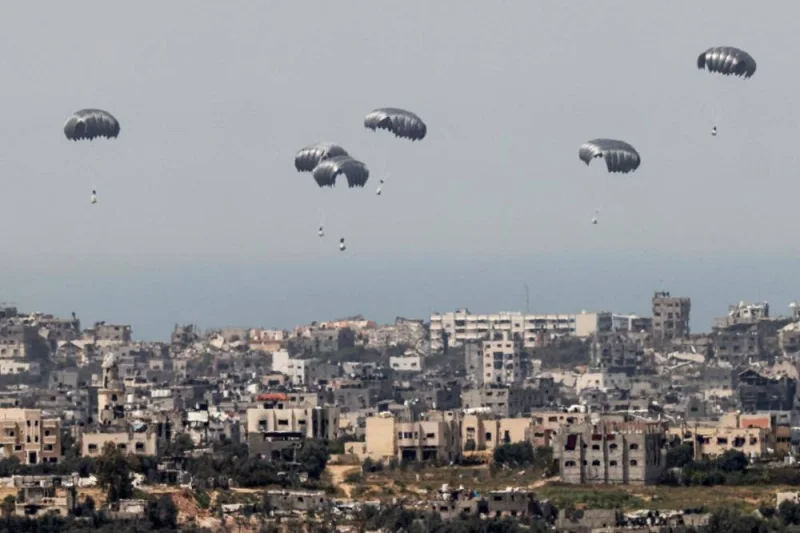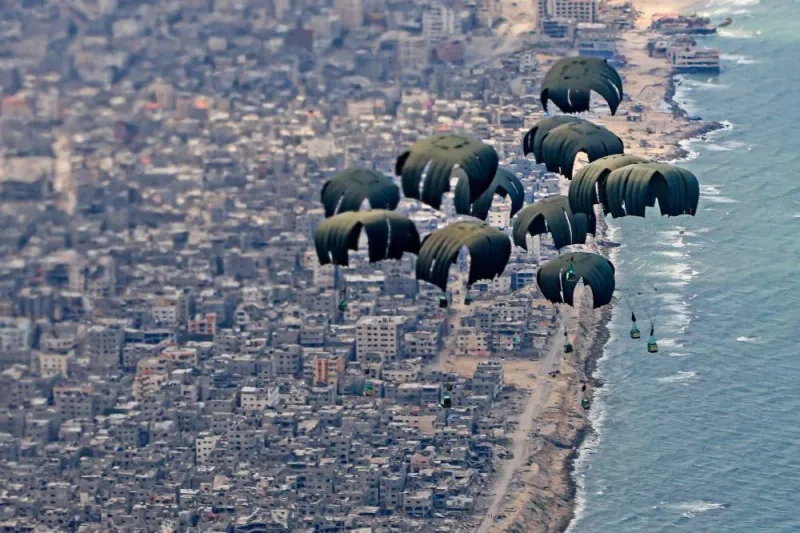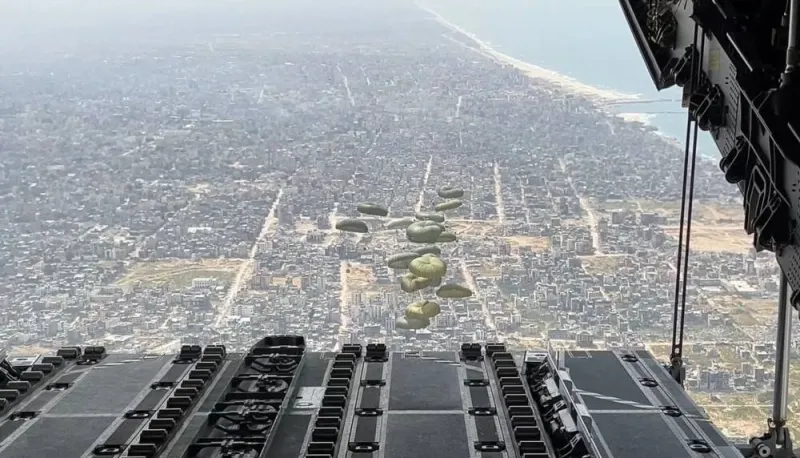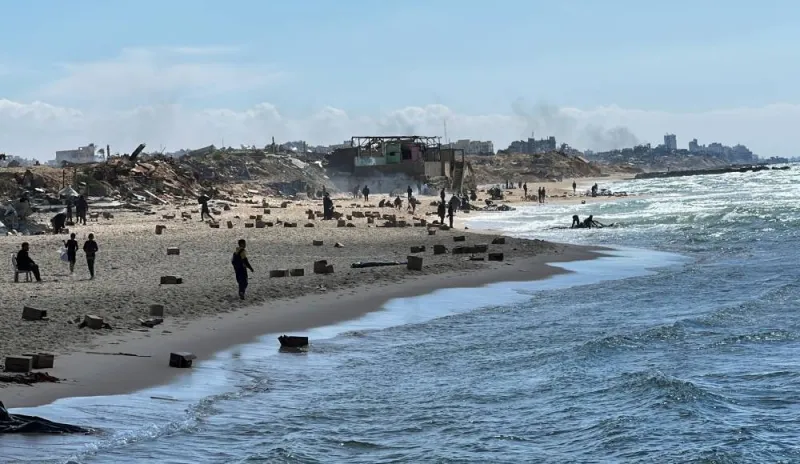Even before 18 people were killed when airdrops of aid into Gaza went disastrously wrong on Monday, many had questioned the sense in using planes when food can be delivered far more rapidly by road.
With only a trickle of aid getting into the starving north and the United Nations warning of "imminent famine" as it accuses Israel of blocking deliveries, foreign governments have turned to airdrops as "a way to show that they're doing something", said Shira Efron of the Israel Policy Forum.
The problem is that "airdrops are as inefficient as they are dangerous", according to a source from an international NGO working in Gaza who asked to remain anonymous.
And they can be deadly to the desperate people waiting on the ground.
Twelve hungry Gazans drowned trying to fish food packages from the sea on Monday and six more were killed in stampedes.
Others have been crushed by the crates after parachutes malfunctioned, with five killed and 10 injured earlier this month when crates fell "like rockets" on the Al-Shati refugee camp.
Despite the deaths and the risks, Palestinians like mechanic Ahmed Al-Rifi were back the day after the latest tragedy waiting for the next drop, on the same beaches where the 18 were killed.
"Every day people get hurt or even killed fighting to get flour, water, lentils and beans," he said.
Taxi driver Uday Nasser said it was "deeply humiliating".
"The strong take from the weaker ones. Sometimes they use knives or even shoot," he said.
UNICEF's James Elder, who is in Gaza, said "typically food aid is delivered from the air because people are cut off and it's the only way to reach them".
"Here the lifesaving aid they need is a matter of kilometres away. We need to use the roads," he said.
Israel denies it is blocking food lorries but aid entering the Gaza Strip by land is far below pre-war levels -- around 150 vehicles a day compared with at least 550 before the war, according to UNRWA, the UN agency for Palestinian refugees.
And only a small amount of that is getting to the famine-threatened north, where the drops are concentrated.
After the latest tragedy, Hamas pleaded for foreign powers to stop the drops saying they were a "real danger to the lives of hungry citizens".
But the plea fell on deaf ears -- Jordan's army said five more drops were carried out on Wednesday with help from Egypt, the United Arab Emirates, Germany and Spain.
The United States also pledged to continue airdrops with US Central Command confirming it had dropped 46,000 powdered meals over northern Gaza on Monday.
Some of those dropping the aid admit it is little more than a gesture with so many of Gaza's 2.4 million people starving.
US Air Force Lieutenant Colonel Jeremy Anderson told AFP during a drop earlier this month that the aid delivered by air was only a "drop in the bucket" of what was needed.
He said that if a parachute failed to open they try to make sure it ends up in the water where "nobody is going to get hurt".
Tragically on Monday, people drowned as they tried to get the crates landing in the water, witnesses saying some of the dead were children.
"The countries doing the drops, particularly the US, know that it is making almost no difference," the humanitarian source claimed.
However, the drops are highly visible and make for striking television images.
You can see them from miles away -- military cargo planes flying low, leaving a trail of black, pink or grey parachutes behind them, each carrying up to a tonne of aid.
"I think it is a way of putting indirect pressure on Israel" to let more food aid in, the source added.
Washington insisted Tuesday it was working "around the clock" to increase the flow of aid into Gaza by land as well as setting up a sea corridor.
The US Army said a floating jetty that will enable aid deliveries via the sea in Gaza was now crossing the Atlantic.
Up to now, only one vessel carrying aid has been able to deliver -- a Spanish vessel towing a barge from Cyprus carrying 200 tonnes of aid earlier this month.
That was the equivalent of what 12 lorries can carry, said Elder, when "hundreds of trucks are waiting on the other side of the Gaza border" full of aid.

A military aircraft releasing parachutes of humanitarian aid over the besieged Palestinian territory on Wednesday. AFP

This picture taken from Israel's southern border with the Gaza Strip shows parachutes of humanitarian aid dropping over the besieged Palestinian territory on Wednesday. AFP

Humanitarian aid being airdropped over Gaza from a Royal Air Force A400M aircraft. AFP/ CROWN COPYRIGHT 2024 / MOD / AS1 LEAH JONES / RAF

A400 military aircraft releasing parachutes with 11.000 tons food rations as part of humanitarian aid over the Gaza Strip. AFP/SPAIN'S MINISTRY OF DEFENCE AND MINISTRY OF FOREIGN AFFAIRS, EUROPEAN UNION AND COOPERATION

Palestinians gather at the sea to collect aid airdropped by an airplane in the northern Gaza Strip, on Monday. REUTERS

Palestinians gather on a beach as they collect aid airdropped by an airplane in the northern Gaza Strip, on Monday. REUTERS

Palestinians gather on a beach as they collect aid airdropped by an airplane in the northern Gaza Strip, on Monday. REUTERS

Members of the crew work on a cargo ship loaded with humanitarian aid for Gaza at the port of Larnaca, Cyprus, on Tuesday. REUTERS
